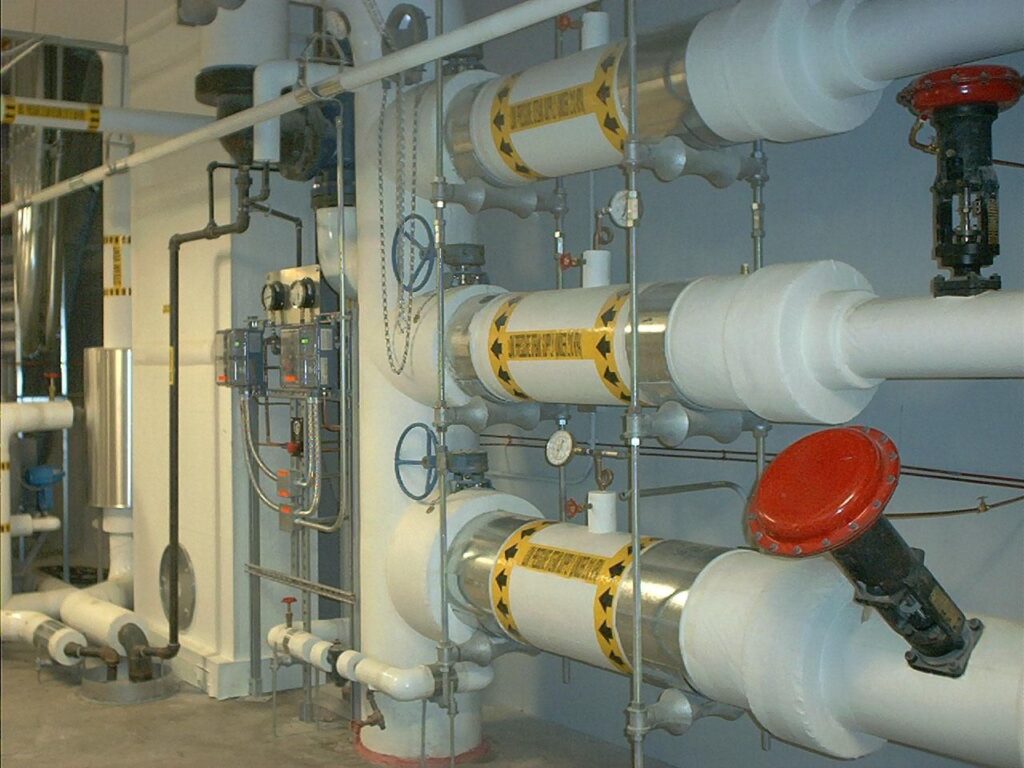HVAC ductwork installation is a key component in establishing an effective heating, ventilation, and air conditioning (HVAC) system. Proper installation of HVAC ductwork is essential for ensuring that air is distributed evenly throughout your home. This balance improves both comfort and efficiency, making it crucial to understand the various aspects of ductwork installation. This guide will help you navigate the complexities of HVAC ductwork installation, from planning and material selection to installation and maintenance.
What is HVAC Ductwork?
HVAC ductwork is a network of pipes or channels that transport heated or cooled air from your HVAC system to various areas of your home. Properly installed ductwork is crucial for efficient heating and cooling. The key components of HVAC ductwork include:
- Supply Ducts: Supply ducts carry conditioned air from the HVAC unit to different rooms in your home. They are essential for distributing heat or cool air throughout the space.
- Return Air Ducts: Return air ducts bring air back to the HVAC unit for reheating or cooling. This process helps maintain a balanced airflow and consistent temperature.
- Registers and Grilles: These components control the airflow and allow air to enter or exit rooms. They are installed at the ends of the ducts and help regulate air distribution.
Efficient HVAC ductwork is crucial for several reasons. Poorly designed or installed ducts can lead to uneven temperatures, higher energy bills, and increased strain on your HVAC system. Ensuring that your duct system is installed correctly can improve overall system performance and comfort.
Types of HVAC Ductwork
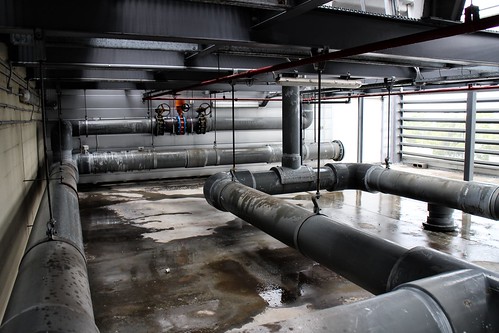
HVAC ductwork comes in various types, each suited to different needs and applications. Here are the main types of ductwork:
Sheet Metal Ducts:
Made from galvanized steel or aluminum, sheet metal ducts are durable and have minimal air leakage. They are commonly used in new constructions and are ideal for larger HVAC systems. Sheet metal ducts provide a strong, reliable option but can be more expensive compared to other materials.
Flexible Ducts:
Constructed from a wire coil covered with a flexible, insulated material, flexible ducts are easier to install and are commonly used for retrofits or in tight spaces. Flexible HVAC ductwork can adapt to various installation scenarios, making it a versatile choice for many homes. Flexible aluminum and flexible polyester options are available, offering different levels of insulation and durability.
Fiberglass Duct Board:
These are panels cut and fitted to form ductwork. They offer good thermal insulation but can be less durable compared to metal ducts. Fiberglass ducts are suitable for areas where insulation is a priority, such as in attics or basements.
Each type of ductwork has its advantages and disadvantages, impacting factors such as installation ease, efficiency, and overall cost. Choosing the right type of ductwork involves considering the materials, installation costs, and the specific needs of your HVAC system.
Planning Your HVAC Ductwork Installation
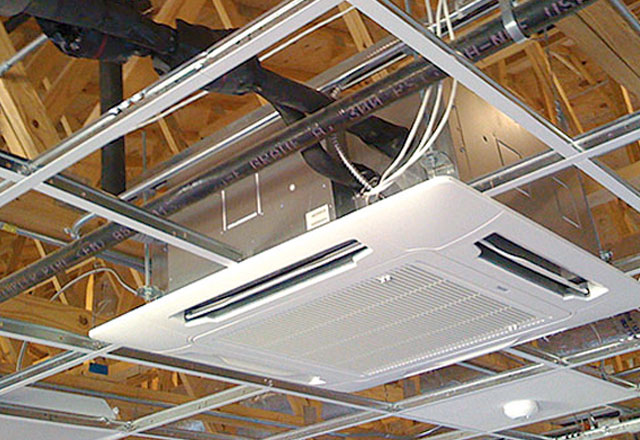
Effective planning is crucial for a successful HVAC ductwork installation. Proper planning involves assessing your HVAC needs, designing the duct system, and choosing the right materials. These steps ensure that your ductwork installation meets your home’s specific requirements, enhancing system efficiency and performance.
Assessing Your HVAC Needs
The size of your house and its layout significantly impact the design of your duct system. Larger homes or homes with complex layouts may require a more extensive duct system to ensure even heating and cooling. For example, a large house might need additional ductwork to cover the entire home effectively.
The type of HVAC system you have, such as a central air conditioner or furnace, affects ductwork design. Different systems may have specific requirements for duct size and configuration. For instance, a furnace might require larger return air drops compared to an air conditioner.
Proper airflow is essential for effective heating and cooling. The duct design should minimize airflow restrictions and ensure even distribution throughout the house. Efficient airflow helps in maintaining consistent temperatures and reducing energy consumption. It can also prevent issues like an HVAC making noise, which is often a sign of airflow problems or improperly sized ducts. Understanding these factors is essential for designing a duct system that is tailored to your home’s needs and improves overall HVAC system performance.
Choosing the Right Duct Materials
Selecting the appropriate materials for your ductwork is critical for system performance and longevity:
- Sheet Metal Ducts: Known for their durability and low air leakage, sheet metal ducts are often used in new constructions and larger HVAC systems. These ducts, made from flat metal such as galvanized steel, can be more expensive but provide a reliable option for maintaining efficient airflow. They’re also compatible with a wide range of air filters, including those considered the best air filters for home HVAC systems.
- Flexible Polyester and Aluminum Ducts: Flexible ductwork, including flexible polyester and flexible aluminum options, is easier to install and can be cost-effective. However, these materials may have higher air leakage rates compared to sheet metal ducts. Flexible ducts are suitable for retrofits or areas with limited space. When using these ducts, it’s important to choose appropriate air filters to maintain air quality or consider supplementing with some of the best air purifiers for additional filtration.
- Fiberglass Duct Board: Fiberglass ducts offer good thermal insulation but can be less durable than metal ducts. These panels are used for their insulation properties and are suitable for specific applications such as in attics or basements.
Planning your HVAC ductwork installation involves understanding your HVAC needs, designing an effective duct system, and choosing the right materials. By considering factors such as house size, HVAC system type, airflow, and material options, you can ensure a successful installation that enhances the performance of your HVAC system. Collaborating with HVAC professionals and carefully evaluating installation costs will help you achieve a well-designed and efficient duct system.
Cost Factors in HVAC Ductwork Installation

Understanding the cost factors involved in HVAC ductwork installation is crucial for effective budgeting and planning. This section explores the various elements that influence the cost of ductwork installation, providing insights into how you can manage expenses and make informed decisions.
Factors Affecting HVAC Ductwork Installation Costs
Several factors impact the overall cost of HVAC ductwork installation:
- Materials: The type of ductwork material you choose greatly affects the cost. Sheet metal ducts, made from galvanized steel or aluminum, are generally more expensive than flexible ducts. Sheet metal ducts are durable and ideal for larger systems but come with a higher price tag. Flexible ducts, including flexible polyester and aluminum, offer easier installation and lower costs but may have higher air leakage rates.
- Labor: The cost of labor can vary based on the complexity of the installation and the contractor’s rates. For example, installing ductwork in a new home versus an existing home can have different labor costs due to factors like accessibility and the need to work around existing structures. Complex installations, such as those requiring modifications to walls or floors, can further increase labor costs.
- Complexity of Installation: The complexity of the ductwork design and installation can also affect costs. More intricate designs or installations in challenging locations, like basements or areas with limited access, can increase the overall expense. For instance, installing ducts in a house with a complex layout or existing infrastructure might require additional time and effort. This complexity can also impact the installation of additional HVAC components, such as humidifiers, whole-house air purification systems, zoning controls, or heat recovery ventilators (HRVs).
Other factors influencing costs include house size, number of vents, system efficiency, and additional components like return air drops and trunk lines. Each of these elements plays a role in determining the total HVAC ductwork installation cost.
Average Costs of HVAC Ductwork Installation
The cost of installing HVAC ductwork can vary widely based on several factors. The average cost ranges from $13.24 to $15.84 per linear foot. This cost depends on the type of ductwork material used, such as sheet metal or flexible ducts, and the complexity of the installation. Another way to calculate installation costs is by square footage. The average cost ranges between $6 and $12 per square foot of the home. This pricing typically includes materials, labor, and additional components like returns or branch lines.
Cost-Saving Tips for HVAC Ductwork Installation
To manage your HVAC ductwork installation costs effectively, consider the following tips:
- Get Multiple Quotes: Obtain quotes from several contractors to compare prices and services. This helps you find the best deal and understand the average costs for your specific project.
- Consider Material Options: Flexible ductwork or less expensive materials might be more cost-effective for certain applications. Evaluate the trade-offs between cost and durability to make an informed decision.
- Plan Efficiently: Proper planning and design can minimize costly changes during installation. A well-thought-out plan ensures that you avoid unexpected expenses and ensure efficient installation.
By balancing cost with quality, you can achieve a functional and efficient duct system while staying within your budget. Proper planning and cost management will help ensure your HVAC project is affordable and effective.
Steps in HVAC Ductwork Installation
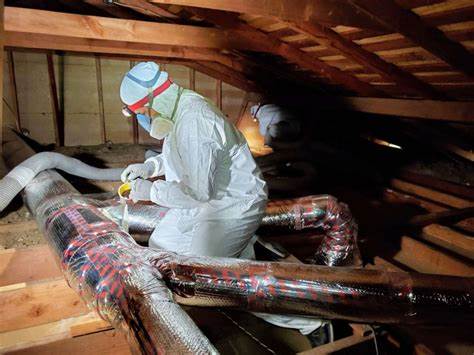
Successfully installing HVAC ductwork requires careful planning and execution. Whether you are installing ductwork in a new construction, replacing existing ducts, or even considering a ductless air conditioning system as an alternative, understanding each step is crucial for achieving an efficient and functional HVAC system. This guide outlines the key procedures for both new installations and replacements, ensuring you are well-prepared for the process, regardless of the type of system you choose.
Preparing for Installation
Preparation is essential for a smooth HVAC ductwork installation. Follow these steps to get ready:
- Clear the Workspace: Ensure that the installation area is free from any obstructions. Remove furniture, tools, and other items that could hinder the installation process. A clean workspace facilitates efficient work and prevents accidental damage.
- Prepare the HVAC System: Check that your HVAC unit is ready for new duct connections. Confirm that the unit is functioning correctly and that there are no existing issues. Make sure the HVAC system is accessible to the contractor for smooth installation.
- Communicate with the Contractor: Have a detailed discussion with your contractor about the installation plan. Include specifics such as the type of ductwork to be installed—whether it’s sheet metal ducts or flexible HVAC ductwork. Clear communication helps ensure that the installation meets your needs and avoids misunderstandings.
Installing Ductwork in New Construction
For new construction projects, follow these steps to install ductwork effectively:
- Step-by-Step Installation: Begin with the installation of the trunk line, which is the main duct that distributes air from the HVAC unit to various areas of the home. Branch out from the trunk line to individual rooms using the chosen duct materials. Ensure that all connections are secure to prevent air leaks and optimize airflow.
- Coordinate with Other Construction Phases: Integrate the duct installation with other aspects of construction, such as drywall and insulation. This coordination ensures that ducts are properly placed and avoids conflicts with other construction elements. For example, install ducts before drywall is put up to avoid complications with wall placements.
- Ensure Efficient Operation: Proper installation from the start is crucial for system efficiency. Make sure that ducts are correctly sized and positioned to maximize airflow and minimize energy loss. Efficiently installed ductwork leads to better temperature control and reduced energy costs.
Replacing Ductwork in Existing Homes
Replacing ductwork in an existing home involves additional considerations:
- Address Installation Challenges: Replacing old ductwork often requires modifying the existing layout to accommodate new ducts. This may involve working in tight spaces such as basements or under floors and addressing existing plumbing or structural elements. For instance, you might need to adjust or relocate existing ducts, such as return air drops, to fit the new configuration.
- Enhance Efficiency: Upgrading ductwork can significantly improve the efficiency of your HVAC system. New ducts enhance airflow and reduce energy loss, which can lead to lower utility bills and better indoor air quality. Effective replacement resolves issues like temperature imbalances and ensures optimal system performance.
- Work with a Qualified Contractor: Choose a contractor experienced in air duct replacement and installing new ductwork. Ensure that the replacement includes modern materials, such as brand-new ductwork, and meets current standards. A qualified contractor will help ensure that the installation integrates seamlessly with your existing HVAC system.
By following these steps, you can achieve a successful HVAC ductwork installation or replacement, leading to improved efficiency and comfort in your home.
Ensuring Proper Installation of HVAC Ductwork
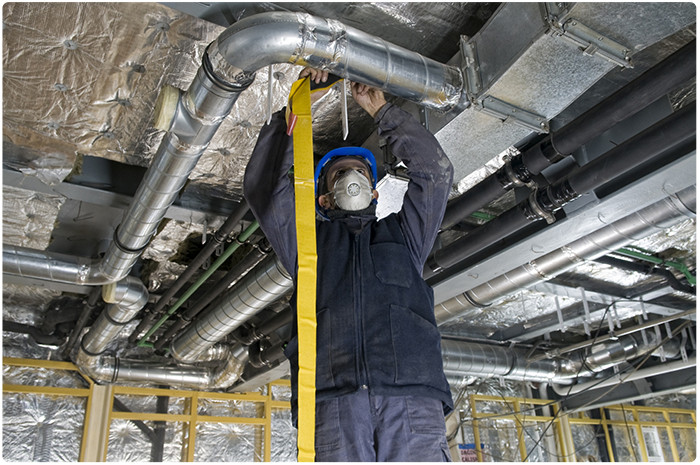
Proper installation of HVAC ductwork is crucial for ensuring your system operates efficiently and has a long lifespan. Properly installed ducts enhance overall system performance, reduce energy costs, and improve indoor air quality. This section outlines the importance of professional installation and provides guidance on inspecting and maintaining your ductwork.
Importance of Professional Installation
The role of professional installation in HVAC ductwork cannot be overstated. Professional HVAC contractors have the expertise needed to install ductwork correctly. They ensure that the duct system is properly designed and installed to match your home’s specific needs.
Professionals adhere to industry standards and local building codes. This compliance is vital for ensuring that the installation meets quality and safety standards. Proper installation by experts helps maximize the efficiency of your HVAC system. It prevents common issues like air leaks and improper sizing, which can lead to higher energy bills and decreased system performance.
Inspecting and Maintaining HVAC Ductwork for Longevity
Regular inspection and maintenance of your HVAC ductwork are key to ensuring its longevity and efficiency. Schedule periodic inspections to check for any signs of wear and tear, such as loose connections or damaged ducts. This helps in early detection of problems that could affect system performance.
Keep ducts clean and free from obstructions. Ensure that insulation around the ducts is intact and that there are no leaks. Proper maintenance helps prevent issues like airflow restrictions and keeps your home ductwork in good condition. If you notice any issues during inspections, such as air leaks or poor insulation, address them immediately. Prompt repairs help maintain system efficiency and extend the lifespan of your ductwork.
Common Issues with HVAC Ductwork
Even with proper installation, HVAC ductwork can encounter issues that affect system performance. Understanding these common problems and their solutions can help maintain your HVAC system’s efficiency and comfort levels.
- Air Leaks: Leaks in ducts, especially in areas like the return air drop or joints, can reduce system efficiency and increase energy costs. Sealing these leaks with appropriate duct sealants or repairs can help restore efficiency.
- Insulation Issues: Inadequate or damaged insulation can lead to energy loss and temperature imbalances. Ensure that insulation is properly installed and maintained to prevent heat loss or gain.
- Improper Sizing: Ducts that are too large or too small for the HVAC system can lead to poor airflow and inefficiencies. Proper sizing, based on load calculations and system requirements, is essential for optimal performance.
- Airflow Restrictions: Blockages or constrictions in the duct system, such as those caused by debris or poorly installed components, can restrict airflow. Regularly check for and remove any obstructions to maintain proper airflow.
Upgrade to Energy-Efficient HVAC Ductwork
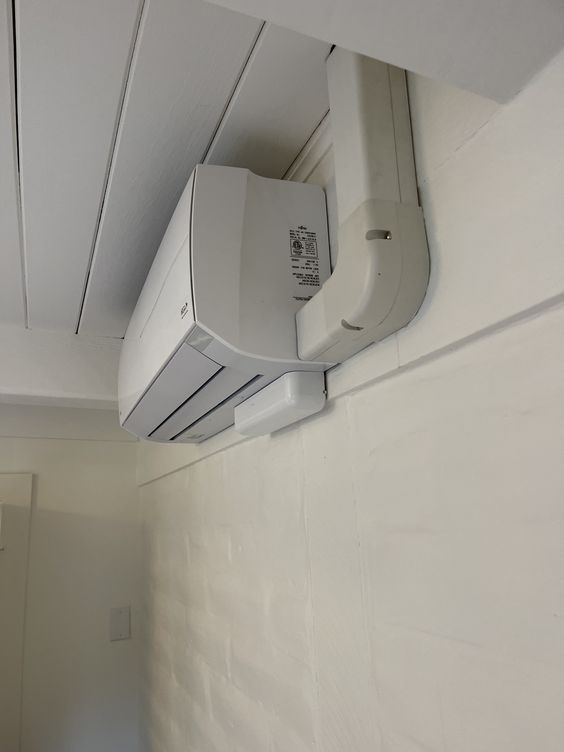
Upgrading to energy-efficient HVAC ductwork is a smart investment for homeowners looking to enhance their comfort and reduce energy costs. The benefits are clear: significant cost savings through improved system efficiency, and better overall performance leading to enhanced temperature control and indoor air quality.
When considering an upgrade, it’s crucial to choose materials and designs that align with your home’s specific needs and your HVAC system’s requirements. This decision isn’t one to make lightly, which is why consulting with a professional HVAC contractor is highly recommended.
Don’t let outdated ductwork compromise your comfort or inflate your energy bills. Contact Callidus Air today for a comprehensive inspection and personalized recommendations. Let us help you take the next step towards a more efficient, comfortable home.
Remember, at Callidus Air, we’re committed to ensuring your home’s comfort efficiently. Your satisfaction and comfort are our top priorities.

